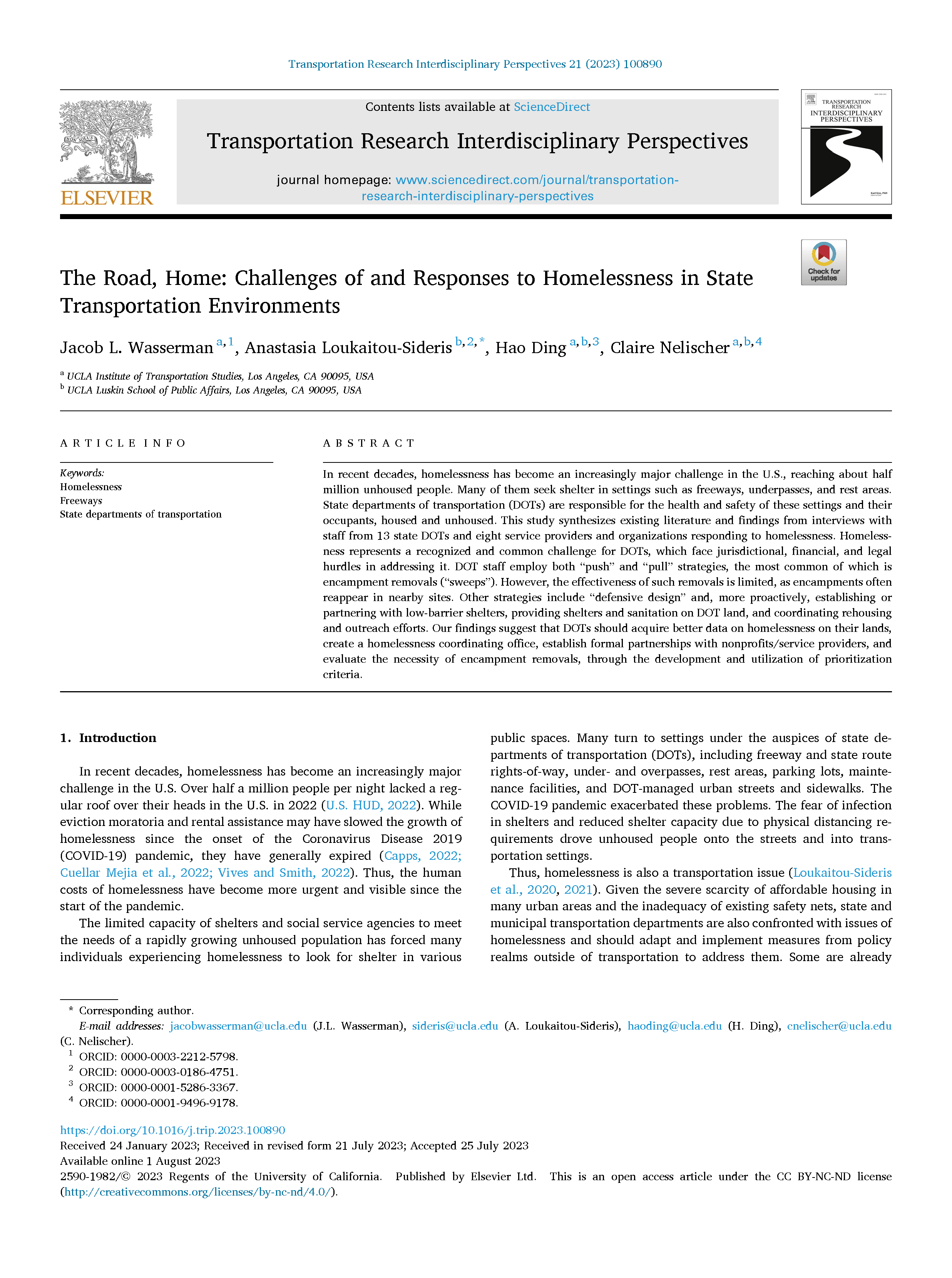Date: September 1, 2023
Author(s): Jacob L. Wasserman, Anastasia Loukaitou-Sideris, Hao Ding, Claire Nelischer
Abstract
In recent decades, homelessness has become an increasingly major challenge in the U.S., reaching about half million unhoused people. Many of them seek shelter in settings such as freeways, underpasses, and rest areas. State departments of transportation (DOTs) are responsible for the health and safety of these settings and their occupants, housed and unhoused. This study synthesizes existing literature and findings from interviews with staff from 13 state DOTs and eight service providers and organizations responding to homelessness. Homelessness represents a recognized and common challenge for DOTs, which face jurisdictional, financial, and legal hurdles in addressing it. DOT staff employ both “push” and “pull” strategies, the most common of which is encampment removals (“sweeps”). However, the effectiveness of such removals is limited, as encampments often reappear in nearby sites. Other strategies include “defensive design” and, more proactively, establishing or partnering with low-barrier shelters, providing shelters and sanitation on DOT land, and coordinating rehousing and outreach efforts. Our findings suggest that DOTs should acquire better data on homelessness on their lands, create a homelessness coordinating office, establish formal partnerships with nonprofits/service providers, and evaluate the necessity of encampment removals, through the development and utilization of prioritization criteria.
About the Project
In recent decades, homelessness has become an increasingly major challenge in the U.S. Of the half million unhoused people in the U.S., many seek shelter in settings under the auspices of state departments of transportation (DOTs), such as freeways, underpasses, and rest areas. This project synthesizes existing literature and findings from interviews with staff from state DOTs, service providers, and organizations responding to homelessness. Homelessness represents a recognized and common challenge for DOTs, but the numbers and location of unhoused individuals in state transportation settings vary and fluctuate. As DOTs face jurisdictional, financial, and legal hurdles in responding, DOT staff employ both “push” and “pull” strategies, the most common of which is encampment removals. However, the effectiveness of such removals is limited. Other strategies include “defensive design” and, more proactively, establishing or partnering with low-barrier shelters, providing shelters and sanitation on DOT land, and coordinating rehousing and outreach efforts. The findings suggest that DOTs should acquire better data on homelessness on their lands, create a homelessness coordinating office, establish formal partnerships with nonprofits/service providers, and evaluate the necessity of encampment removals, through the development and utilization of prioritization criteria.


